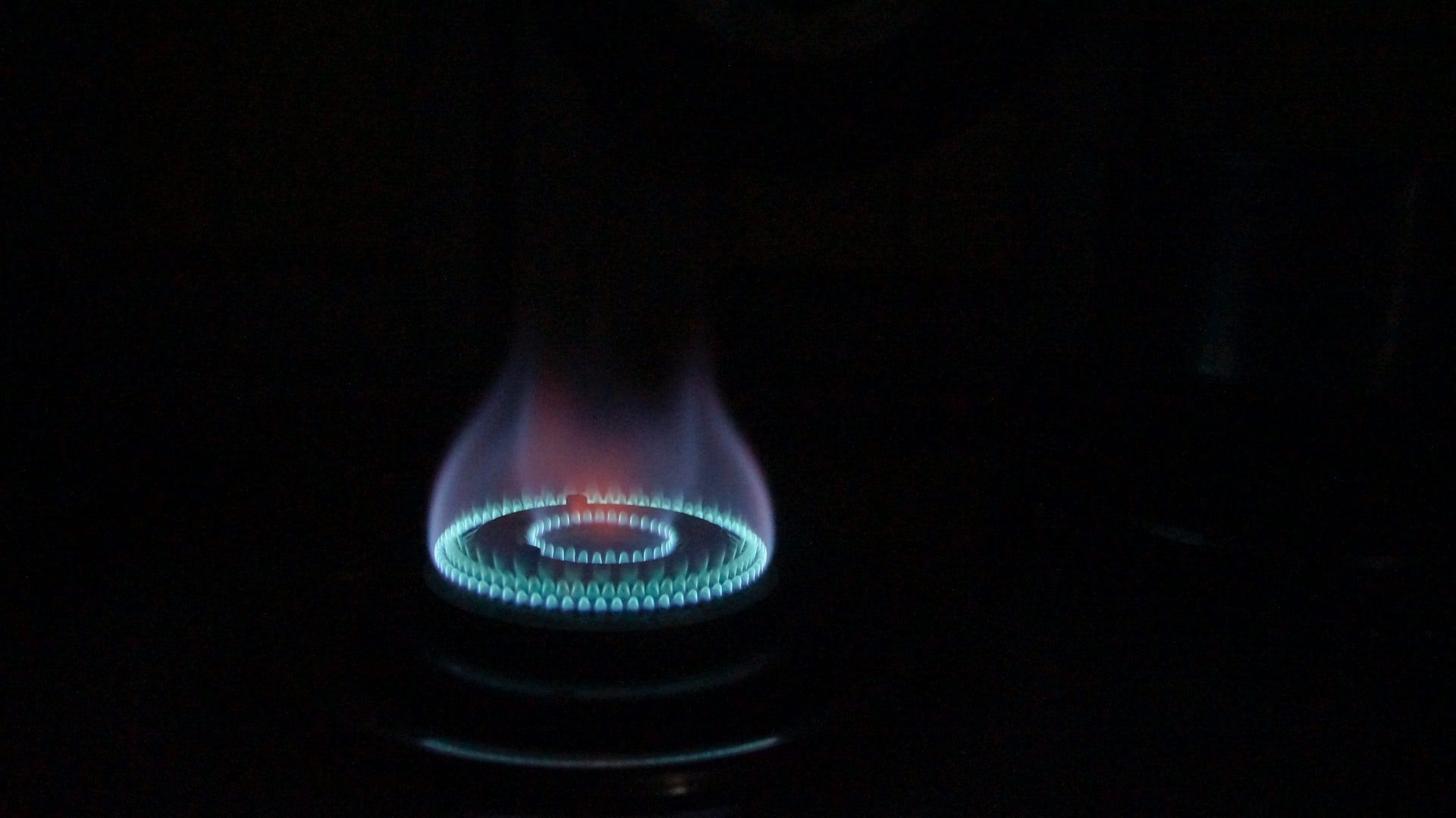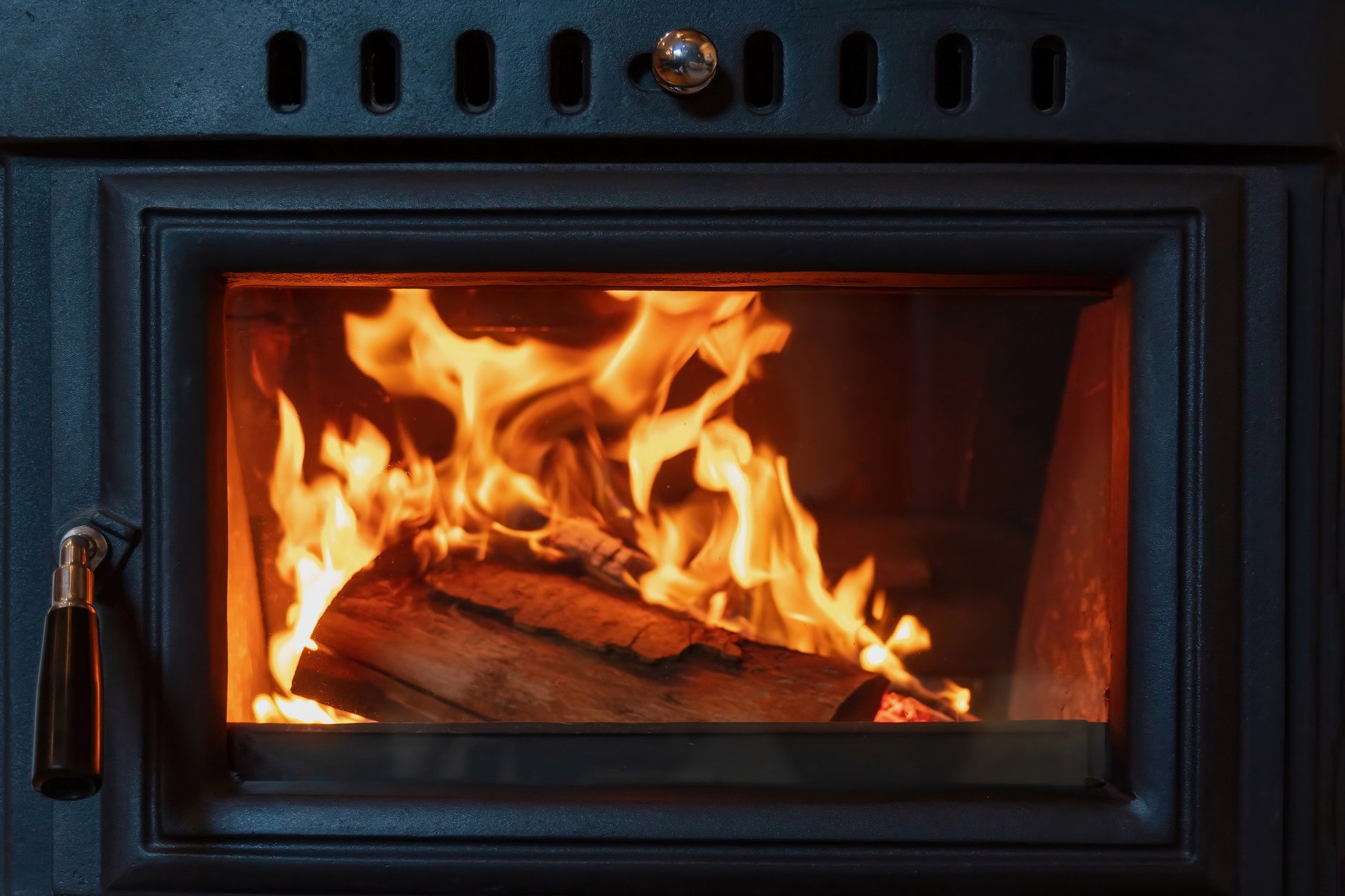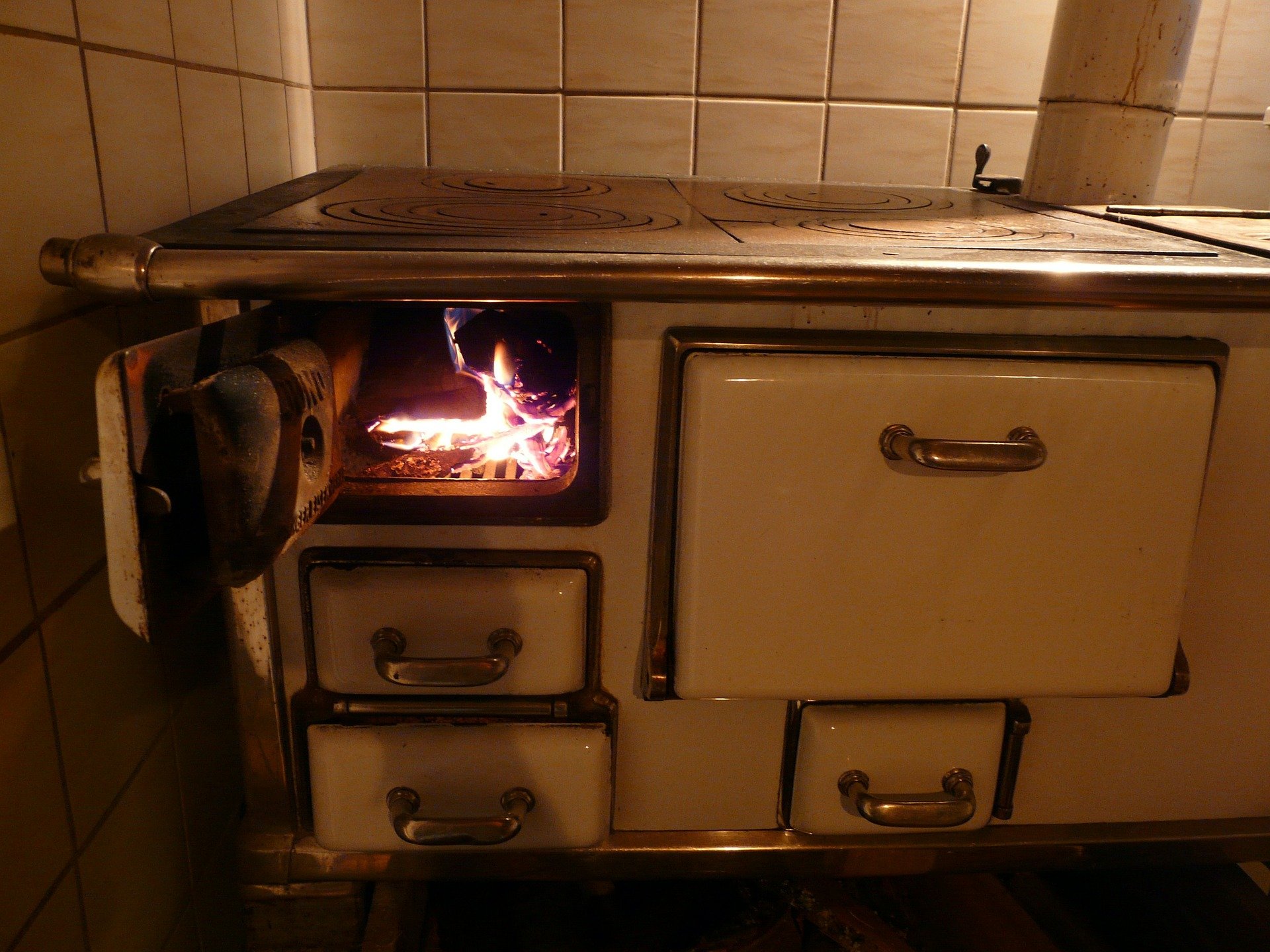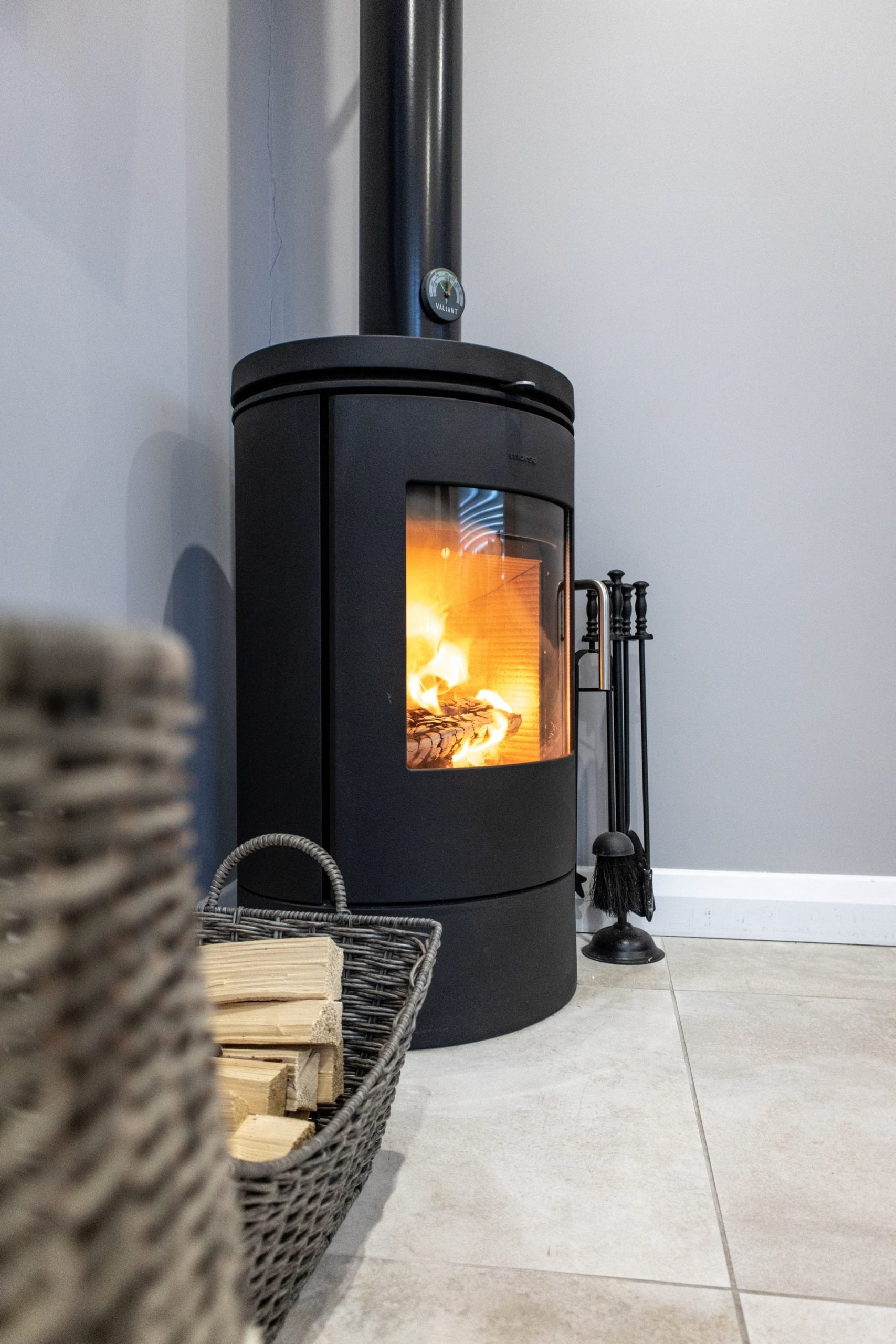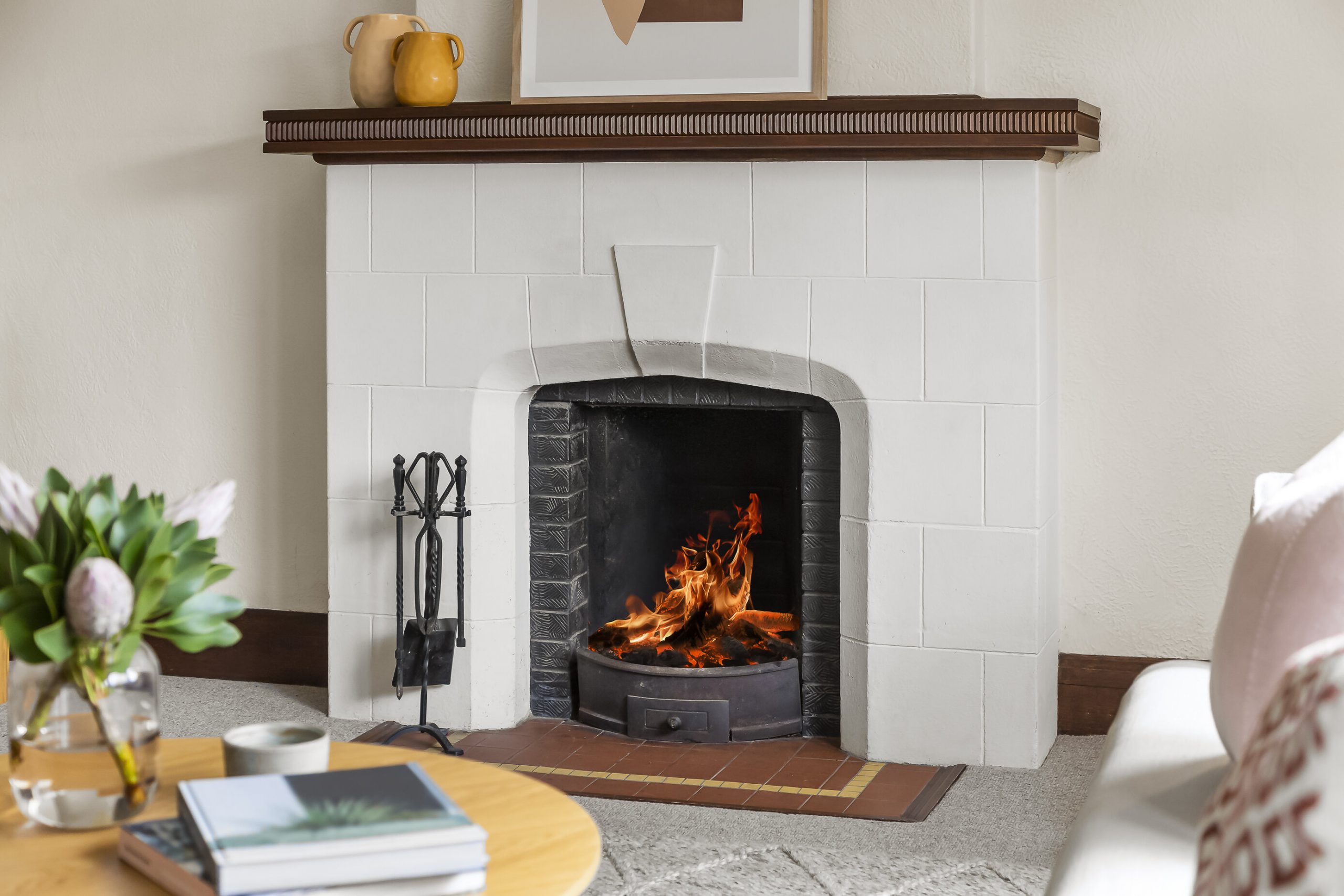Why You Should Consider Getting a Stove Thermometer
A stove thermometer is a must-have kitchen gadget for anyone who loves to cook. It is a device placed on the stovetop to measure the stove's temperature. This is important because the stove's temperature needs to be monitored to ensure that food is cooked properly.

Prevents Your Stove from Running Too Cold
If your stove runs too cold, it can cause your food to be undercooked. This is why it is essential to use a stove thermometer. By placing the thermometer on the stovetop, you can monitor the stove's temperature and ensure that it is running at the proper temperature. This will help to ensure that your food is cooked properly.
Helps with Fuel Efficiency
A stove thermometer is an excellent way to help you be more fuel efficient when cooking. By monitoring the temperature of your stove, you can better control the amount of fuel you use.
A stove thermometer can help you save money on your fuel bill and help you cook more evenly. If your stove runs too hot, you can adjust the flame to use less fuel. Conversely, if your stove runs too cool, you can turn up the flame to use more fuel.
A stove thermometer is a simple and effective way to help you be more fuel efficient. By monitoring the temperature of your stove, you can better control the amount of fuel you use.
Allows You to Make the Most of Your Stove
A stove thermometer is an excellent way to ensure that your stove is operating at peak efficiency. By monitoring the temperature of your stove, you can make sure that it is running as efficiently as possible. Monitoring your stove's temperature will help to prolong the life of your stove.
There are a few things to keep in mind when using a stove thermometer. First, you need to place the thermometer in a location where it will not be disturbed by the heat of the stove. Second, you need to ensure that the thermometer is placed in a location where it can accurately measure the temperature of the stove.
The best place to put your stove thermometer is on the back of the stove. This way, the thermometer will not be affected by the heat of the stove, and it will be able to accurately measure the stove's temperature. You should also make sure that the thermometer is placed in a location where it is not in the way of the stove door.
Another thing to keep in mind when using a stove thermometer is to check the temperature regularly. This way, you can make sure that the stove is running at its optimal temperature. If the stove is not running at its optimal temperature, you may want to adjust the settings on the stove.
Final Thoughts
A stove thermometer is a really great way to ensure that your stove is operating at the correct temperature. By monitoring the temperature of your stove, you can make sure that your food is cooked evenly and efficiently. In addition, a stove thermometer can help you to save energy by ensuring that your stove is not set too high or too low.
Improve your cooking experience with the help of Stove Scotland. We are market experts with a comprehensive knowledge of stoves and fires that provide quality multi-fuel stoves in Scotland. We will work with you to ensure that your stove will perfectly fit the style and dimensions of your room. Get a free quote now!
The Various Advantages of Using a Wood Burning Stove
Wood-burning stoves are self-contained heating appliances that use wood combustion to generate indoor heat. There are many different sizes and styles, but the fundamental principles remain the same.
The stove's body, which is usually made of steel or cast iron, contains a wood fire. The fire warms the stove's body, which radiates heat into the surrounding area. The smoke from the fire exits the structure via a passageway (called the flue) that leads to a chimney.
While they have taken the backstage due to the different heating technology available, there are various advantages to using a wood-burning stove. In this article, we will run you through the reasons why you should consider a wood stove.
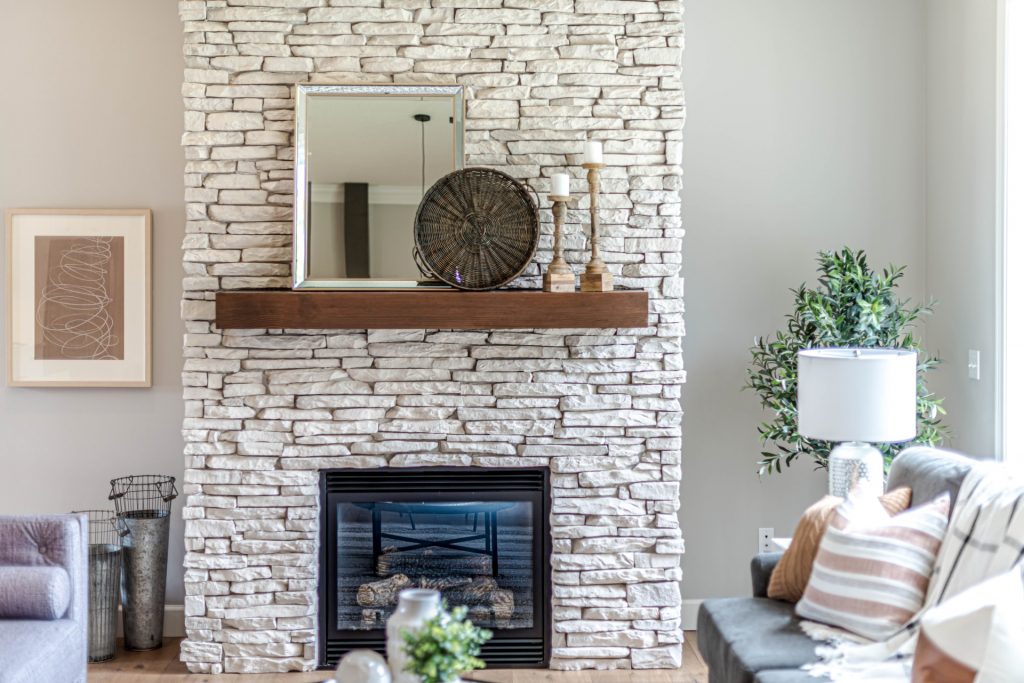
Beyond the Country Chic Aesthetic
Wood-burning stoves today come in a wide range of styles, from traditional pot-bellied country kitchen units to sleek, ultramodern contemporary models. Wood-burning stoves are also available in freestanding, corner, and built-in wall-mounted configurations.
Heating More Space
A wood stove on the main floor will also help heat a second floor because heat rises. Placing the stove in the room where you spend the most time can help you save up to 25% on fuel.
You may find whole-house wood-burning systems that can replace existing gas, oil, or electric heating systems to heat your entire home for less. They're also extremely modern, with features such as automatic wood hopper loading, automatic ignition switches, programmable timer settings, and remote controls.
Efficient Modern Models of Stoves
Earlier models of wood stoves were not known for their efficiency, but stove manufacturers have improved in recent years. When shopping, look for EPA-certified models that emit only two to seven grams of smoke per hour instead of the 15 to 30 grams per hour produced by old, uncertified stoves.
Saving on Energy Usage
Four cubic metres of adequately seasoned hardwood generates heat equivalent to approximately 590 litres of fuel oil. Wood is a renewable resource, and trees grown in your area can help your local economy.
Added Safety Features
Since the 1980s, wood stoves have become safer than ever. This is due not only to the new appliance and part standards but also to training and certification programs for people who sell and install wood stoves. They'll assist you in ensuring that your stove is installed correctly, with a proper hearth underneath to protect your floor.
Reliability
One of the most unpleasant aspects of severe winter weather (aside from having to dig your way out) is the possibility of losing power. That's where a wood stove comes in handy, keeping your home toasty warm and providing a place to cook a meal even when the rest of your appliances are broken.
Airflow Control
If you already have a wood-burning fireplace in your home, you can buy a fireplace insert to convert it from a purely decorative hearth to a functional wood stove. These insert kits close off the fireplace and allow you to control airflow like a wood-burning stove.
Functionality
You can find modern wood stove units that can be connected to water heaters or radiators for even more energy savings. A growing online community of resourceful home hackers can assist you in safely DIYing your solution.
Conclusion
Wood stoves are a great way to heat your home. They are efficient and can save you money on your heating bill. They are also environmentally friendly and can help you reduce your carbon footprint.
Are you looking for a wood stove in Scotland? Stove Scotland has experts with comprehensive knowledge of stoves and fires to ensure you get the perfect wood and multi-fuel burning stoves. Get a free quote today!
Are Wood Burning Stoves Better for the Environment?
Considering the current state of our world, it would be wise to look for more environmentally friendly ways to live our lives. And while there are a slew of different ways to do this, one thing you may want to consider is making the switch to wood-burning stoves. Wood-burning stoves are a low-carbon alternative to heating your home using fossil fuels. Trees absorb carbon dioxide as they grow; when their wood is burned, they release the carbon back into the atmosphere. Locally sourced logs or wood pellets can make your stove carbon neutral. Now, we understand if you need more information on this subject. This is why we thought it would be useful to put together a brief discussion on wood-burning stoves and their ability to reduce your impact on this environment. If this is something that you’re interested in learning more about, read on as we discuss whether or not wood-burning stoves are better for the environment.
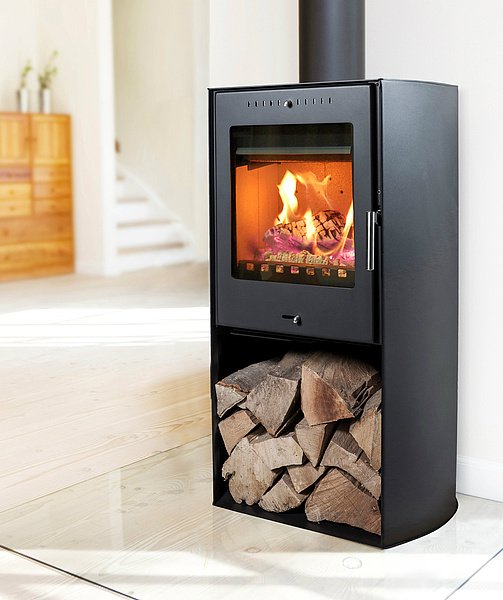
Are Logs Better than Fossil Fuels?
The key advantage of log-burning stoves over electric or gas heaters is the fuel they burn. Logs are carbon neutral, meaning that when they burn, they increase the carbon dioxide in the atmosphere by the same amount that forests absorb every year. Fossil fuels are not carbon neutral and add to the amount of carbon already present in the cycle. They need to be imported, so their carbon footprint is even greater.
Aside from being carbon neutral, the kinds of emissions given off by burning wood are far less harmful than those given off by fossil fuels. The most dangerous gasses released into the air are carbon dioxide, nitrous oxides, and particulate matter that is less than 2.5 microns in diameter, also called PM2.5, which is best combated by reducing the burning of fossil fuels.
What Type of Wood Should You Use?
Burning any old wood in your wood-burning stove is not necessarily the most environmentally-friendly approach. To burn wood in a wood-burning stove as efficiently as possible and cause as little of an impact on the environment as possible, you should use dry, seasoned wood. This fuel is easier for your stove to burn, which means that it heats up more quickly and produces more heat than damp or unseasoned wood.
The most energy-efficient humidity for logs is under 20%, while new logs may be as high as 60%. To bring the log moisture content down to the most energy-efficient level, place the logs in a dry location with plenty of air circulation for at least a year. You can also purchase kiln-dried logs, which have a moisture content of around 18% and will thus dry out faster.
Conclusion
We hope this article proves to be useful when it comes to helping you gain a better understanding of how using wood-burning stoves can help reduce your impact on the environment. As you can see, wood-burning stoves are a far more sustainable option than other stoves. If you’re looking to do your part in improving the state of the environment, wood-burning stoves are something that you need to seriously consider.
Are you looking to buy the best log-burning stoves in Scotland? Stove Scotland has got what you need! We will work with you to ensure that your stove will perfectly fit the style and dimensions of your room. Contact us today to learn more
4 Important Questions to Ask Yourself When Choosing a Stove
If you’ve been considering getting a wood-burning stove, then you’re probably aware of the wide array of choices. Indeed, wood-burning stoves come in a range of different shapes, sizes, and styles. Given the sheer number of choices, some of you may find it difficult to choose a wood-burning stove. To help make things easier for you, we thought it would be useful to put together a brief article discussing things that you need to consider when you’re shopping for a wood-burning stove. If this is something that you want to learn more about, read on for four important questions that you need to ask yourself when choosing a stove.
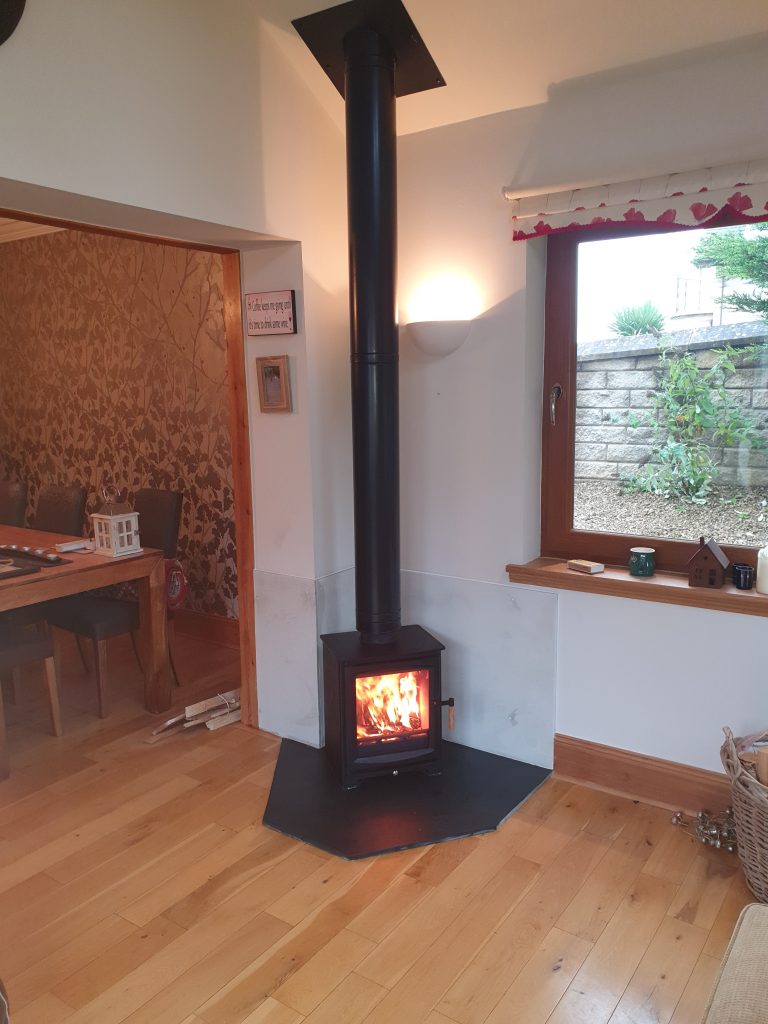
What Style of Wood-Burning Stove Do You Want?
When choosing your stove, one of the most important factors to consider is the design. This might seem like a simple decision to make, but considering the sheer number of options, it may be more complicated than you think.
There are many different types of stoves available on the market, from traditional to contemporary models. If you want to place a stove in a more modern living room, you may want to choose a contemporary model. These stoves often have a more streamlined shape and large viewing windows. Finally, you have to decide whether you want a freestanding or inset stove. Inset stoves are built into a wall and create the illusion of a fireplace, while freestanding stoves can be adapted to your space more easily.
What Fuel Do You Want to Burn?
The type of stove you select is based on the type of fuel you want to burn. Not all stoves can burn solid fuels, and some may only be able to burn properly seasoned wood. It's important to understand that wood-burning stoves can only burn wood, while multi-fuel stoves offer more flexibility. Multi-fuel stoves can burn more than just wood; they can also burn solid fuels and smokeless fuels like coal, peat and anthracite. This makes them ideal for homes located in smoke-controlled zones.
How Much of Your Home Do You Want to Heat?
When choosing a stove, it is important to consider the heat output, or 'Kw', that is right for the room you plan to put it in. Smaller rooms require less heat, so a smaller Kw stove will suffice. If the stove produces too much heat, the room could overheat, and if it produces too little heat, you will use more fuel and the stove will not be as efficient. For small to medium-sized living spaces, a stove with a heat output of no more than 5Kw is recommended. For larger rooms, a stove between 5Kw and 8Kw will work, depending on the size of the room. If you want to heat your entire home or contribute to the boiler or central heating power, you should consider a stove with a heat output of 8Kw or more.
Is The Area You Live In a Smoke-Controlled Zone?
If you live in a smoke controlled area in the UK, you need to make sure you only buy a DEFRA-approved stove. These stoves are cleared to burn authorised fuels in smoked-controlled areas across the UK. Smoke-controlled zones in the UK are usually limited to urban, town, and city areas, but it's always important to check whether your area is included. You can contact your council directly to inquire about this.
Conclusion
We hope this article proves to be useful when it comes to helping you choose the right stove for your home. While it may seem tricky at first, the information above should help make things significantly easier for you. Remember, there is no one best option for wood-burning stoves, as you’ll really need to choose the one that is right for your space.
Are you looking to buy the best log-burning stoves in Scotland? Stove Scotland has got what you need! We will work with you to ensure that your stove will perfectly fit the style and dimensions of your room. Contact us today to learn more
Top Tips for Wood-Burning Stove Maintenance: What to Know
Wood-burning stoves are like any piece of engineering: you have to take care of them if you want them to last. If you treat any stove well, it will provide you with a lifetime of service, but if you neglect your stove, you will end up regretting it. With that in mind, this blog post will share a few tips to keep your stove in tip-top condition for many years to come.
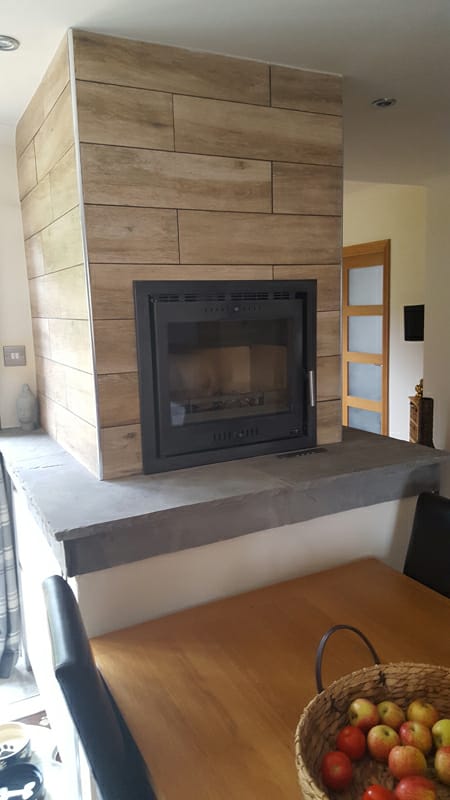
Top Tips for Wood-Burning Stove Maintenance: What to Know
1 - Clean the Glass
Sometimes, the glass becomes dirty because of wood-burning. If you don't clean it, your stove will not be able to fully circulate the hot air around the room. Most of the time, you can simply clean the glass with a dry cloth, but you have to be careful: if you clean it with a wet cloth, it may damage the glass and make it foggy.
2 - Inspect for Rust
As your stove heats and cools, the paint will eventually start to peel, and when this happens, the metal underneath will start to rust. This is not good: rust is a sign that your stove is getting old and needs to be replaced. It also means there will be a lot of rust to clean up when you replace your stove. It is very important to inspect your stove every year, so you can replace it before it gets too old.
3 - Keep the Air Vents Clear
As you use your stove, you will need to keep an eye on the air vents. If you see a lot of ash collecting on them, you will need to clean them by removing the pins or by cleaning the entire vent with a wire brush. You will also want to keep an eye on the damper. If it doesn't open and close properly, you will need to clean it with a wire brush.
4 - Change the Air Filters
You probably don't think about changing the air filters in your home very often, but you will want to make sure your stove has the best possible air circulation. The air filters in most stoves are designed to trap dirt and soot from the burning wood, which helps the stove to last longer and makes your home more comfortable. You will need to replace the air filters every year or so in order to keep them clean.
5 - Replace the Ash Pan
You will need to replace the ash pan on your stove whenever it gets too worn out. The ash pan is what collects all of the ash that you produce while burning wood, so you will want to monitor this very closely. When you start to see the ash pan rust or get damaged by heat, you will need to change it.
Conclusion
If you want your wood-burning stove to last for a long time, then you will need to take very good care of it. With very little effort, you can dramatically increase the longevity of your stove, and you will enjoy the benefits for many years to come.
If you are looking to buy a wood stove in Scotland, contact Stove Scotland. We supply top brands such as Merlin, Aduro, Pod, Askgard, Termatech, and Burley and are confident that we can find the perfect match for you. Don't have a Chimney? That's not a problem – we can fit your stove anywhere!
Why You Should Be Using Seasoned Firewood for Your Stove
Do you have a wood stove or fireplace? If so, you have to make sure you are using the right kind of wood. Using seasoned firewood is key to maximising your stove’s efficiency.
The term "seasoned firewood" refers to any hardwood that has been dried to a moisture percentage lower than 20%.
How much of a difference does it make to use seasoned wood? An ineffective fire will not heat your home, but an efficient, attractive, and clean fire would. Your wood-burning stove will run more efficiently if you use wood with the proper moisture content.

This article will discuss the necessity of using good, seasoned firewood with low moisture content.
Efficient Wood Burning
You may improve the efficiency of your wood-burning stove by using seasoned firewood.
Water evaporation from wood consumes energy that may otherwise be utilised to heat your house. The wetter the wood, the lower the efficacy of your fire. Using unseasoned wood with a moisture content of 40% will reduce your total efficiency by as much as 50%.
Easy Startups
One of the most common concerns we hear about wood stoves is the work required to fire them up. Wet firewood takes significantly longer to ignite than dry firewood because it requires more energy to get rid of the moisture.
All of the water must be pushed out of the wood before it can burn. When starting a fire with damp wood, you'll need more kindling—and maybe many attempts—to get the timber heated enough to keep it going.
Clean Burn with Fewer Pollutants
Wet wood is not only difficult to ignite, but it also produces more smoke and soot when it heats up. Smouldering flames release hazardous contaminants into your house. The pollutants produced are more dangerous the wetter the wood is. These dangerous contaminants are reduced by seasoning wood.
Less Smoke Byproduct
If you have glass near your stove or fireplace, using unseasoned wood isn't doing it any favours either. Unseasoned wood smoke byproducts might cling to the glass. This obstructs the view of the flames.
Preventing Chimney Fires
Because creosote has the potential to cause chimney fires, it is a significant safety problem for wood stove users. Creosote buildup is unavoidable. Thus, frequent chimney inspections and cleanings from stove installers and maintenance professionals are essential.
Burning damp wood accelerates creosote production, increasing the likelihood of a chimney fire. Using seasoned wood with the proper moisture content for firewood will help keep you and your family safe.
How Can You Tell If Your Wood Is Seasoned?
In seasoned firewood, the colour is typically faded, and noticeable cracking may appear.
We strongly advise all wood-burning stove owners to use a moisture meter while storing their fuel. Moisture meters are available to determine the moisture level of your firewood quickly. Simply split a piece of wood and use a moisture meter to ensure it is under 20% moisture content before burning.
If you don't have a moisture meter, there are a few additional options for determining whether or not your firewood has been properly seasoned. As seasoned firewood loses moisture, it gets a faded appearance, generally grey or yellow.
Furthermore, seasoned firewood is lighter than wet firewood because it contains no water.
Conclusion
In conclusion, you must use only seasoned firewood to ensure that your home is adequately heated. Using unseasoned firewood is not only inefficient, but it can also be dangerous to your health and safety.
Do you want a wood stove in Scotland? Stove Scotland provides high-quality wood stove services, ensuring excellent customer satisfaction. Get a free quote today.
Warm and Cozy: Where to Place Wood Stoves in Your Home
Wood-burning stoves make any place homey. You will be relocated back to your home for as long as you see one, no matter where you are. This feeling might be why they are popular. Although they have their hazards, they are still a great source to heat your home or any other place domesticated.
Unlike gas and electric stoves, a wood stove is convenient to heat your home, especially when you have a woodshed near your yard. Since they can harness the sun rays and the heat it gives off, the blue flame from the stove is just enough to heat your house during the winter.

With all the benefits, we face the dilemma of where to place the stove. Thankfully, this article will help you solve this age-old puzzle.
How Many Rooms Should Be Heated
Putting your wood stove near the centre of the family room is a good idea. This way, you can heat all the rooms in the house.
The room where you place the stove would be the one you want to warm the most. If you are going to heat the entire house, you might have a hard time bringing the heat. Even then, try to put the stove in the centre of the house and let the heat spread.
Gather your friends and loved ones in the living room while the warmth spreads to the other rooms. You can relax and enjoy the stove's heat while chatting with the family. The rest of the house would be warmed by your stove.
The kitchen is also a great place to put your stove. During breakfast time, all the family members gather in the kitchen. This time is a great time to warm the area up. You can also cook using the stove.
Consider How the Temperature Will Affect Drafts
The draft that comes from the stove door can push the heat from your room. It is recommended that you place a fan near the stove. This way, you can balance the temperature.
The draft would also diminish once you place the stove at a low end of your room. If the place where you will put the stove faces the outside, you might have a draft. It is the reason why the furnace cannot function well.
Try to move the stove near the centre of the room. This way, you can minimize the draft in the room and let the stove function more efficiently. To avoid moving your stove, you might want to cover the gaps in your windows. Thus, you can create better heat.
Nowhere Near Combustibles
The best place to put your stove is nowhere near anything that can catch fire. Avoid placing the stove near curtains, walls, and woodwork. It was already mentioned that wood-burning stoves still produce smoke, and you do not want to be putting it near anything that would catch fire easily.
Try to place the stove near the centre of your room. This way, you can watch the furnace and ensure it does not cause any trouble. There is a gap between the stove and the ceiling. The gap is used for the smoke to get out of the room.
Conclusion
Wood-burning stoves are not just for the outdoors. You can use it inside the house, but you must be careful about where to place it. These tips will help you place your stove without any problems. You just have to remember to keep it from your curtains and other things that can easily catch fire.
If you are looking for a store that sells wood stove in Scotland, you do not have to look far. At Stove Scotland, we offer tops brands, such as Aduro, Askgard, Merlin, and Pod. Check our website now so that you can see what will fit your home.
Amazing Ways to Make Your Wood Stove Last for Centuries
Wood stoves are essentially simple machines that provide heat to a home when the owner needs it the most. They are controlled fires, and they require regular maintenance to ensure they maintain their efficiency.
Regardless of how efficient your stove is, you will still have ash. There are several ways to remove ash from your wood stove; one of the most common methods is with a shovel and a bucket placed outside in a safe area. The tools should be made of metal and withstand high temperatures.
All wood stove stoves need to be cleaned regularly; even the most efficient design will leave ash residue behind. Using the essential tools of an ash shovel and an ash bucket, you can make sure your stove is clean.
You must also prepare enough space in the wood stove so the bucket can withstand high temperatures; this bucket should be placed outside and away from anything flammable.

Amazing Ways to Make Your Wood Stove Last for Centuries
Most maintenance must be done while the stove is not in use so that there is little danger of burning yourself as you work on the stove. Some aspects you need to check consistently include:
The Doors and Gaskets
You should inspect the firebox door for an airtight seal. The first step is to check the rubber gasket on the metal door. One of the easiest ways to prevent this is using a money bill. Shut and lock the firebox door, then place the dollar halfway between the gasket and door.
Gently pull on the dollar bill and see how much resistance you feel. If there is little resistance, you'll need to replace the rubber gasket. Nowadays, rubber gaskets are made from a fibreglass material that can tolerate high temperatures.
One way to clean and inspect the glass window in your firebox door is to wipe it down with a damp rag and an ammonia-based cleaner. This will remove the white ash that sometimes collects at the edges of your glass window.
However, if brown stains appear on your glass, you might need to buy a wood stove glass cleaner; these stains often form when your stove is not burning correctly. These brown stains are from wet or green wood, slow-burning fires, inefficient combustion, or excessive creosote in pine wood.
The Chimney and Flue
Hire a chimney sweep that comes out once a year to eliminate creosote buildup, which results from low- and slow-burning fires and releases copious smoke and particulate matter. When these hit the cold stove pipes connected to the chimney, smoke and particles are more likely to form creosote.
Ensure your wood stove's fire is good, hot, and consistent to prevent this. Some other factors can cause creosote buildup: a fire that's too hot and warps the firebox or causes other parts of the stove to bend over time. Of course, a fire suppressant may also be applied to put out a chimney fire if creosote buildup is significant. The best solution is to purchase creosote cleaning logs and use them during regular fires to clear out the creosote while it burns away.
Prevent Rust Like This
Prep the wood stove by painting it with a heat-resistant coating. Make sure the paint is dry before lighting a fire inside. Start a fire even if it’s summer — this will help you test if it’s working correctly.
Conclusion
There are many different kinds of wood stoves, each with its unique features. If your stove has a feature like a catalyst, firebrick, soapstone or other options, then check your owner’s manual for recommended maintenance. Find a nice warm day and check to see that everything is working correctly. You’ll sleep better at night with these tips, knowing your stove is tip-top shape!
Purchase a durable wood stove in Scotland at Stove Scotland today! We sell top brands such as Merlin, Aduro, Pod, Askgard, Termatec, and Burley, which we can install anywhere in your house! Get your free quote from us today!
How Does a Fireplace Add to the Value of Your Home?
For a variety of reasons, you may be looking into a new fireplace installation. You may be putting in a new fireplace or redoing the entire look of your home. However, some people may be adding a fireplace to raise the market worth of their house. Is it possible to increase the value of your home by installing a new fireplace?
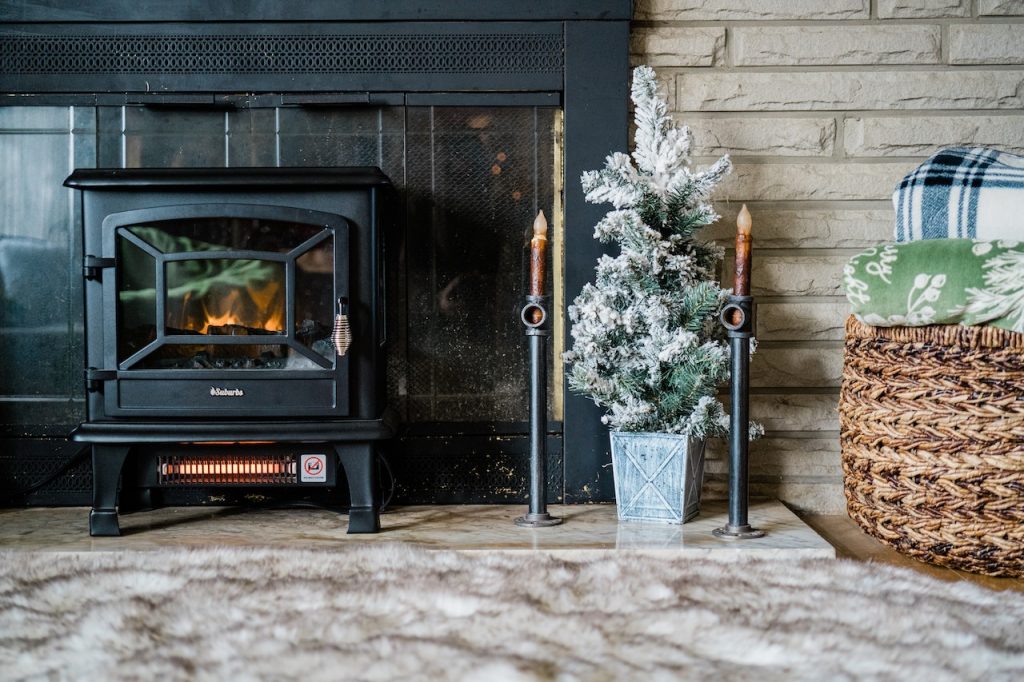
Potentially, yes. Installing a new fireplace can help increase the value of your home in a cost-efficient way. However, this may depend on various factors. Here are some aspects that may affect the value a fireplace can add:
Is the Fireplace Energy-Efficient?
Upgrades to a more contemporary, energy-efficient fireplace might raise your EPC (Energy Performance Certificate) band, adding thousands of dollars to your sales price.
Having a green fireplace will be an enticing selling point for potential purchasers, especially with additional green taxes on the horizon. For both your house's current and future owners, efficient fireplaces may increase the property's value because they can save money on heating costs.
Is the Fireplace Functional?
Incorporating a fireplace into a media wall enhances the aesthetics of the space and increases its usability. To do away with cumbersome TV stands, you might use a media wall. This can double as a storage room for books, records, or other goods.
Adding a fireplace as part of a larger media wall makeover will increase the value of your property.
The Aesthetics of the Fireplace
Still, the aesthetics of your fireplace can add to its value. An unappealing fireplace can easily downgrade the value of your home. A modern home suits a stylish modern fireplace.
How Much Value Will a New Fireplace Add to a Home?
The value of a property can be increased by 5% if it has a new fireplace. Property evaluators and interior designers often agree on this. It may seem like a small percentage, but when you consider the whole worth, it's a lot more than you may expect.
The House Price Index estimates that the typical home in the United Kingdom is worth £250,341 (April 2021). If you were to install a fireplace, you would get an extra 5%, which would bring the total to £262,858 - an additional $12,500! Thus, adding a fireplace to your home may dramatically affect its value.
Fireplace Types to Consider Adding to Your Home
If you want to add a fireplace to your home, you have various options. You can choose between different styles of fireplaces to increase the value of your house. The most common types are:
Solid Fuel
An open, solid fuel fireplace may add significantly to the resale value of your property if you don't already have one. Solid fuel fireplaces are a time-honoured heating method that uses a broad stone fireplace with cast iron grates or baskets.
However, installing a new wood-burning fireplace might be pricey if you don't have a chimney or if your chimney has been stopped up in the past. If you don't already have one, you'll need a fireplace and a chimney constructed.
Electric
There has been a rise in the popularity of electric fireplaces on the market since the 1980s. This is the ideal option if you do not want the hassle of connecting your fireplace to your home's gas supply. Fireplace installers may recommend this type as they offer flexibility whether you want it to be freestanding, wall-mounted, or inset.
If you want to build a media wall, there are a lot of electric fires that are made for this. Electric fires are also becoming more high-tech with app-based controls, 5D fire displays, and virtual reality.
Gas
Gas fireplaces are among the most adaptable, versatile, and affordable options. Newly constructed homes that don't have working chimneys can benefit from gas fires because they don't require the use of a chimney.
Conclusion
Installing a fireplace can be a great way to improve your home and potentially raise its resale value. To maximise the value, choose the right fireplace for your home and make sure it is functional, energy-efficient, and aesthetically pleasing.
Are you looking for fireplace installation in Scotland? Stove Scotland has market experts to get you the best stove and fireplaces you need.
5 Ideal Ways to Maintain a Safe Wood Burning Stove at Home
When installing any item in your home, safety should always come first. This applies to anything, from washing machines to toasters. However, no home appliance is more hazardous than a wood-burning or multi-fuel stove.
Without proper installation, your stove could push through blocked air vents to no avail. This could lead to potentially dangerous build-ups of carbon monoxide in your home.
Besides the potential carbon monoxide poisoning, they are a source of heat and, to a large extent, a source of your home's energy. For this reason, they need to be installed and used responsibly to prevent potential fire hazards.

Here are five ideal ways to have a safe wood burning stove at home:
1. Maintain Adequate Ventilation
You need to make sure that air can get into your home through any windows or doors and then circulate your home. This is especially important during the winter when the stove will be in most demand.
If you live in a home with more than one level, you may need to consider the installation of an exceptional ventilator on your roof.
2. Clean All the Flues Regularly
When a wood-burning stove is used, dust can quickly build up in the pipes and clean it regularly. Failure to do so can lead to clogs and potentially dangerous carbon monoxide build-up.
3. Make Sure Any Stove You Purchase Is Certified
A credible manufacturer reviews any stove you purchase from their store to ensure that it built according to industry standards. This is why you need to be wary about purchasing second hand units.
When you purchase a used stove, you will have no way of knowing what the furnace has been used for and where it has been. Unless you can effectively determine its quality or if its warranty still stands, it’s best to look for a brand new model.
4. Keep Ample Space between Your Stove and Flammable Objects
It would be best if you placed your wood-burning stove well away from flammable objects. Flammable and combustible materials are anything made out of foam or fabric.
One metre away from the stove would be enough to lessen the risk of starting a devastating fire. Additionally, ensure that any vents for your stove are well above the level of the flame and that any heat generated does not build up around it.
5. Have Your Stove Serviced Regularly
A properly maintained and serviced stove will last you longer than one that is not. This should be done not just when it acts up, but regularly to detect potential issues.
It is essential that the flue is free from any build-ups and that it is cleaned at regular intervals to ensure that there is adequate airflow. This is why a pre-emptive service is always better than calling for repairs.
Conclusion
There are now plenty of wood-burning stoves built to the highest safety standards and offer an efficient and effective way of heating a home. However, it’s not something that you can do yourself. To maintain your safety, leave the wood burning stove installation to professionals and select the best service provider around. This would mean choosing Stove Scotland!
We will ensure that your stove will perfectly fit the style and dimensions of your room without worrying about having a chimney. If you need professional stove installers in Edinburgh, contact us now!




